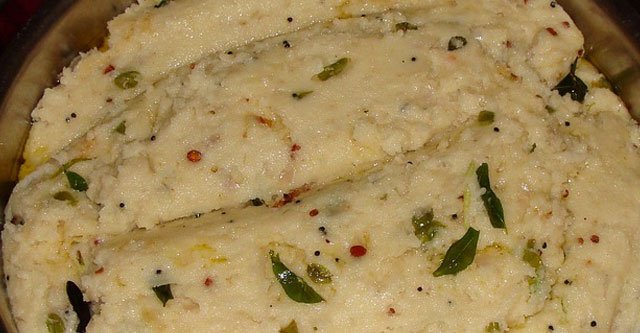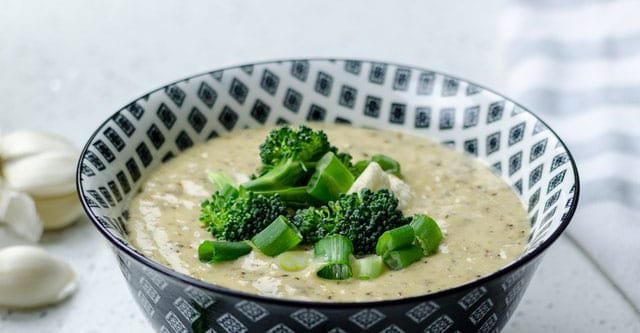Last Updated on October 13, 2020 by Dr Sharon Baisil MD
Introduction
A healthy pregnancy is a must to give birth to a healthy child. The health of a pregnant woman largely depends on the diet.
Pregnancy is such a phase of a woman’s life where she can eat generously as she is eating for two. But conditions like gestational diabetes can destroy this plan.
The usual food habit in all over India is focused on more carbohydrates. This adversely affects blood sugar, worsens diabetes, and gestational diabetes.
Conversely, as an agro-based country, there is a wide variety of complex carbs safe in diabetes and gestational diabetes.
The South Indian diet for gestational diabetes is almost like a type 2 diabetes diet. You need to switch to a substitute food which is low glycemic and low in calorie.
Gestational diabetes; definition, risk factors, causation, and complications:
The term ‘gestational’ means during pregnancy, and ‘diabetes’ means increased blood glucose. High blood sugar first identified during pregnancy is called gestational diabetes.
Risk factors include-
>Overweight and obesity
__________________________________
⭐ Check out this Flipbook with 30-Day Diabetic Meal Plan based on Foods from Each Indian State ⭐
(click on the ▶ arrow below to scroll the pages and 🔍 button to enlarge)
_____________________________
>Prediabetes and previous history of gestational diabetes
>Polycystic ovarian syndrome etc.
In the pregnancy period, the placenta secrets some hormones that can simultaneously stimulate glucose absorption and inhibit insulin release.
The hormones are HPL(human placental lactogen), cortisol, growth hormone, and progesterone. The secretion of these hormones usually raises in the last 3-4 months of pregnancy, and the symptoms are prominent then.
Insulin is a key to the door of the cells for glucose entry. As the pancreas can not release insulin according to the elevated amount of glucose, the blood glucose becomes persistently raised. Thus gestational diabetes occurs.
There is a greater risk of preeclampsia ( severe headache, high blood pressure, fluid retention, etc.) in people with diabetes than nondiabetic.
The diseased mother gives more glucose to the fetus, and the baby’s pancreas tends to release more insulin.
The excess glucose will be utilized by the fetus’s cells, and there will be cell growth. Insulin can cause fat storage.
Also, there are many insulin receptors distributed throughout the body, especially in the heart, liver, kidney, etc. The binding reaction of insulin overgrows these organs.
Ultimately there will be excessive growth of the fetus. This is known as macrosomia.
Macrosomic babies face many problems from birth. They require a cesarean delivery.
After birth, they become incredibly hypoglycemic due to the sudden stoppage of glucose supply from the mother. But the insulin is still primarily produced and secreted.
These babies often need intravenous glucose supplementation. Besides this, there is associated seizure and breathing difficulty in some cases.
About 50% of women permanently develop type 2 diabetes after delivery. There is evidence of diabetes in babies also.
Gestational diabetes is screened routinely in the 24-26th week of pregnancy.
Another test is performed after the 6th week of delivery to know whether diabetes permanently develops or not.
Relevance of an appropriate diet in gestational diabetes management
I am starting with a short story. Mrs.Anupriya is six months pregnant. She went to a nearby hospital with her husband for a regular antenatal checkup.
On the way, she felt an intense craving for ice cream and pastry. They decided to go to an ice-cream corner after the appointment.
The doctor gave Anupriya some tests that included a gestational diabetes screening test. The test came out positive, and she was advised to follow a restricted diet that didn’t have any high sugary foods like ice cream and pastry.
Anupriya was very much disappointed. Her husband and the doctor motivated her to follow the recommended diet chart.
Diabetes management is based on changing lifestyles. Diet is a part of that. Gestational diabetes is a bit different.
Here, the demand of the body increases, and you need to eat larger amounts of food. But being diabetic during pregnancy, you crave for everything will not always be fulfilled. This is the saddest part.
Diets planned with complex carbs, lean protein, unsaturated fats, and abundant vitamins and minerals are considered safe and nutritious.
An appropriate, balanced diet can control gestational diabetes and also can prevent the additional risk of complications.
South Indian food list for gestational diabetes
The staple foods of south Indian people are based on carbs. Diabetic pregnant women can’t change the whole food habit.
Instead, they could use substitute foods that are low in carbs and have low glycemic indices. Also, they should be dependent on large amounts of fruits and vegetables to meet up their needs.
Here, I am giving some sample food lists. You can take ideas from them.
General shopping guide:
★ Carbohydrate items:(complex carbs)

- Whole wheat
- Bajra(buckwheat)
- Jowar(sorghum)
- Ragi
- Quinoa
- Oats
- Poha(flattened rice)
- Dalia(bulgur)
- Brown rice
- Wild rice etc.
★ Protein items:
Animal source:

- Chicken
- Fish
- Egg
- Seafood (prawn, crabs- if not allergic)
- Goat, lamb, beef, pork, etc. (in a small amount without fat portions)
Plant source:

- Lentils
- Moong
- Chickpeas
- Legumes
- Beans
- Nuts ( almonds, walnuts, pistachios, peanuts, cashews, etc.)- Unsalted variety
- Fox nuts, lotus seeds( if not allergic)
★ Vegetables(Non-starchy)

- Cabbage
- Broccoli
- Cauliflower
- Okra
- Mushroom
- Eggplant
- Red and green bell peppers
- Radish
- Bottle gourd
- Bitter gourd
- Cucumber
- Asparagus
- Carrot
- Mint
- Lettuce etc.
★ Fruits(low GI)

- Blackberry
- Blueberry
- Apple
- Pear
- Orange
- Grapefruit
- Guava
- Avocado
- Apricot
- Plum etc.
★Dairy Products(low fat)

- Low-fat milk/skimmed milk
- Yogurt (low fat) – Greek yogurt is best.
- Buttermilk etc.
South Indian items prepared with the foods from the list:
A pregnant woman with gestational diabetes will split up her meals into 6/7 times instead of 3 times.
Early morning (6.00-7.00 am):
Early rising is very much beneficial for a diabetic pregnant woman. The food choices in this time are-

- A glass of milk(flavored with almond)
- Cinnamon tea
- Green tea
- Black tea or coffee( If you feel stress, avoid it)
- Lemon tea or juice
- One piece of digestive(non-sugary) biscuit etc.
Breakfast ( 8.00-9.00 am):

- Oats idli/ oats upma/ oats dosa/ ragi roti/ adai/ quinoa upma/ khichdi(quinoa, dalia)
- Sambar, chutney/ curd
- 1 hard boiled egg(if possible) / Egg bhurji
Mid-morning snacks/Pre-lunch (10:30 am-11.00 am):

- One handful of dry fruits( almonds, walnuts, pistachios, cashews, peanuts, etc.) / Seasonal low glycemic fresh fruits/ Mixed fruit salad
- Coffee without sugar/ Mint lemonade
Lunch(1.00pm-2.00pm):

Whole wheat roti/ ragi roti/ bajra roti/ brown rice
- Stir-fried okra/ mushroom curry/ stir fried cabbage/cauliflower with methi/ mixed vegetable curry
- Dal
- Fish curry/chicken/ paneer masala
- Tomato raita/tomato chutney/pudina chutney
- Cucumber and carrot salad
Evening(4.00pm):

- Upma with dry fruits
- Sprout chaat
- Fruits salad
- Buttermilk/lemonade
Late Evening(6.00 pm):

Vegetable soup/corn soup
- Upma
- Rasam
Dinner(8.00pm-8.30 pm):

- Whole wheat or multigrain roti(check the lunch section for multigrain options)
- Fish/ chicken/paneer gravy
- Dal
- Boiled Spinach
- Mixed vegetables
- Radish salad/cucumber and onion salad
- Curd
Bedtime (at least one and a half-hour after dinner):
1 cup low-fat milk
Essential tips to make a balanced diet for gestational diabetes:
Food choosing tips:
Check for glycemic index(GI) and glycemic load(GL) of food before adding them to the cart. Give priority to those with lesser values.
These are vast topics to discuss.
The Glycemic index is such a parameter that determines how rapidly a carbohydrate food will raise your blood sugar compared with glucose or white bread.
Eg.Sweet potato is preferred instead of the potato because of its low glycemic value.
Range:
0-55 (low)
56-69 (moderate)
70 or above (high)
Glycemic load is the quantitative measure of carbohydrates. The amount of carbs in a food is timed by glycemic index value and then divided by 100.
If you eat food with low GI value in a large amount, the GL value will be more. So, the GL value helps in carbs moderation.
Range:
0-10 (low)
11-19 (moderate)
20 or more (High)
- Include complex carbs instead of highly refined ones.
Refined carbs have high GI and GL values. They can raise blood sugar a lot.
Whole grains are slowly digested and absorbed. So they will moderately release glucose in the blood.
- Choose non-starchy vegetables.
These are rich in fiber, vitamins, and minerals that give benefits to a gestational diabetic patient.
Starchy veggies have the potential to raise blood sugar more. So they are avoided.
- Add plenty of low glycemic fresh fruits in the diet. Include two servings of fruits a day.
Fruits also contain necessary fibers, vitamins, and minerals. They have sugar content too. So the low glycemic ones are preferred.
- Lean proteins are preferable.
Proteins are essential for a pregnant woman, even if she has diabetes. Lean proteins are a balanced source of protein and loaded with other necessary nutrients.
E.g. Sea fishes are rich in unsaturated fatty acids that also improve diabetes.
- Dairy products of low-fat variety are chosen.
Milk and milk products are known as a balanced food. But high-fat contents may bring complications. You can take low-fat varieties without hesitation.
- Keep varieties of nuts and dry fruits into the diet.
Nuts and dry fruits are a great source of plant proteins, fibers, necessary vitamins, and minerals. Eating them, you can feel satiated for a long time.
Pregnant women typically can eat these. With the burden of gestational diabetes, nuts and dry fruits become more beneficial.
- Yogurt based foods are necessary. Greek yogurt is preferable. Raita or lassi are good options too.
Yogurt is rich in protein, minerals, and probiotics. It improves digestion and also helps in controlling weight.
Weight control is a significant issue in gestational diabetes, also.
Eating tips:
- No need to skip any meal. Skipping meals will make you more hungry and indulge you in eating more.
- Eat meals maintaining 2-3 hours. The meals should be tiny in amount but rich in required nutrients.
The balanced meal planning and a specific gap satisfy your hunger and give essential nutrients in the right amount at the right time.
- Drink at least 8-9 glasses of water in a day.
- Salt and sugar are strictly prohibited.
Sugar is a refined form of carb, and we have already known about the effect of cultured foods in gestational diabetes.
Salty foods can cause salt and water retention in the body. As a result, there is a chance of hypertension and edema(swelling of the body).
These symptoms in pregnancy may lead to disastrous conditions like preeclampsia and eclampsia.
- Vegetarians must add plant based proteins in large amounts to their diet such as lentils, nuts, moong, chickpeas etc.
Protein is such a nutrition source which is a must for a pregnant woman even if she is diabetic and vegetarian.
Proteins cause slow digestion of other carbohydrate items and keep the blood glucose under control.
And the body building and energy giving acts are the basic functions of protein.
As they can not take proteins from animal sources, they have to depend on these items.
- Avoid deep fried food, junk food and soft drinks.
- Home made foods are preferable. The manufacturing and expiry date should be considered before eating foods from outside.
- Try to cook in less oil.
- Report immediately to your doctor if you feel hypersensitivity to any food.
Conclusion:
Pregnancy itself is a stressful condition. When it is complicated with gestational diabetes, the situation gets worse.
A balanced diet with some exercise can control it to a certain extent. Insulin is prescribed in some cases.
The south indian meal planning for diabetes seems a bit difficult for people as their diet mostly depends on high amounts of carbohydrates. You need to consult your doctor or a dietitian for a proper meal plan.
Give priority to the food items with low glycemic index and glycemic load value. They will ensure to maintain your blood glucose level under control.
A proper breakfast is necessary to control blood sugar. Make sure to include all types of nutrients in the basic meal time.
You must add enough fibers to your everyday diet. This will improve your gut functions and release less glucose in blood.
The ratio of vegetables and fruits in the diet should be larger. Reduce intake of saturated fats and sugary foods and drinks.
You can obviously control gestational diabetes. Don’t get upset and wisely deal with the situation.
References
- https://www.tandfonline.com/doi/abs/10.1080/13590849762402
- https://www.sciencedirect.com/science/article/pii/S2212619817300086
- https://www.tandfonline.com/doi/abs/10.1080/10942912.2017.1295387
- https://pubmed.ncbi.nlm.nih.gov/29759105/
- https://pubmed.ncbi.nlm.nih.gov/28867097/
- https://pubmed.ncbi.nlm.nih.gov/2273190/
- https://pubmed.ncbi.nlm.nih.gov/26741823/
- https://pubmed.ncbi.nlm.nih.gov/28802292/
- https://pubmed.ncbi.nlm.nih.gov/17903341/
- https://pdfs.semanticscholar.org/1acd/378e45aea1d303836ee118dcf211cda7a6eb.pdf
- https://www.nature.com/articles/1602951








